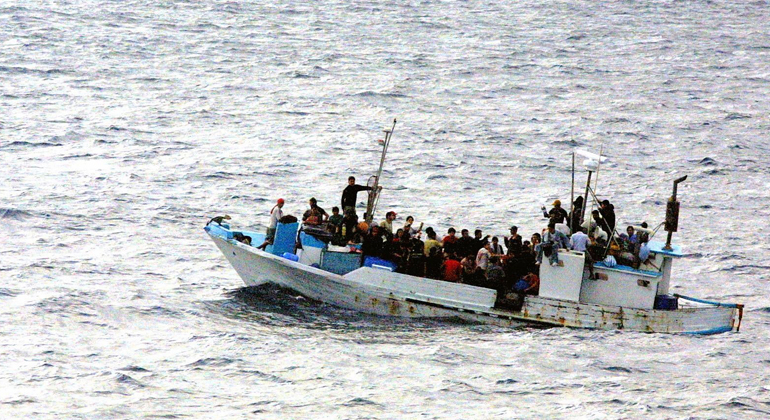Development aid to reduce migration: costly and partly ineffective
Development aid is largely ineffective in reducing irregular migration. A new comprehensive study led by the Kiel Institute for the World Economy finds that aid causes only a brief, temporary reduction in asylum seeker numbers—in the most fragile countries there is none at all. Over time, aid leads to an increase in regular migration, which consists mainly of labor, student, and family migration.
“As the number of refugees continues to rise, European and American policymakers are under pressure to find solutions to limit the number of refugees and other asylum seekers. New proposals to limit irregular migration are discussed almost daily. Whether they are effective is often unclear, as evidence is lacking,” says Moritz Schularick, President of the Kiel Institute. “For this reason, our researchers have re-examined the effects of development aid on migration using new and exceptionally rich data—refuting one of the most commonly-held assumptions in current policy approaches in the process.”
Aid reduces irregular migration only temporarily, increases regular migration
The study (Fuchs et al., 2023) uses nationally representative surveys from the Gallup World Poll covering almost one million individuals in 106 countries and geocoded data on World Bank aid project allocation from 2008–2019, allowing for unprecedented detail. The results disentangle the impacts of foreign aid on various aspects of migration: individuals’ aspirations, capabilities, and actual migration patterns.
In recent years, in response to large numbers of irregular migrants, Europe and the United States have spent billions of dollars on foreign aid to reduce migration from poorer countries. The idea is simple: foreign aid should reduce the “root causes” of irregular migration in the countries of origin, such as poverty, lack of opportunity, and insecurity. And by improving local living conditions, aid would make emigration less attractive.
Contrary to the apparent consensus among policymakers in high-income countries, the study’s authors find that reductions in asylum-seeker movements are short-lived. Globally, aid disbursements reduce the number of first-time asylum seekers. For an average origin country and the average annual project disbursement of 130 million US dollars, the study finds a reduction of the number of first-time asylum seekers for the next two years by about 8 percent each. However, after two years, this dampening effect disappears. Moreover, in Sub-Saharan Africa, aid proved to be ineffective, causing no reduction in the number of asylum seekers at all.
In the long run, if aid successfully addresses root causes of migration by raising people’s living standards and incomes, people’s means to migrate actually increase as more people are able to finance the costs of migration. An important finding of the study is that—contrary to what might be expected—this does not translate into higher numbers of asylum seekers on average. Instead, two to three years after aid disbursements, regular migration increases as more people can migrate safely, orderly and regularly for work, study, and family reunification.
No silver bullet in migration management
The study’s findings suggest that only an unrealistically vast increase in aid would prevent the majority of irregular migration. The impact of aid on reducing irregular migration is therefore not the silver bullet that policymakers often claim or hope for and should not be overestimated.
“The issue is complex–and therefore requires a comprehensive, multifaceted approach”, says Tobias Heidland, Director of the Research Center “International Development” at the Kiel Institute and co-author of the study. “You can try to curb irregular migration with aid, but you need to be realistic about the effectiveness. Foreign aid is not the solution. Building walls and policing borders will also not stop irregular migration completely—especially given the Mediterranean Sea. We need to help provide more refugee protection near conflict zones and reduce the incentives for other irregular migrants. At the same time, we should open more legal channels. The evidence shows that many of the tools currently in use are not very effective. That calls for making approaches as cost-effective as possible and combining tools to create maximum impact instead of applying tools in isolation.
The primary objective of development aid is to promote development and reduce poverty in the recipient countries—regardless of any indirect effects on migration. If it also reduces irregular migration by addressing some of the root causes of migration, that’s great, but it should not be the main motivation to provide foreign aid.”
- Policy Article Does Foreign Aid Reduce Migration?








